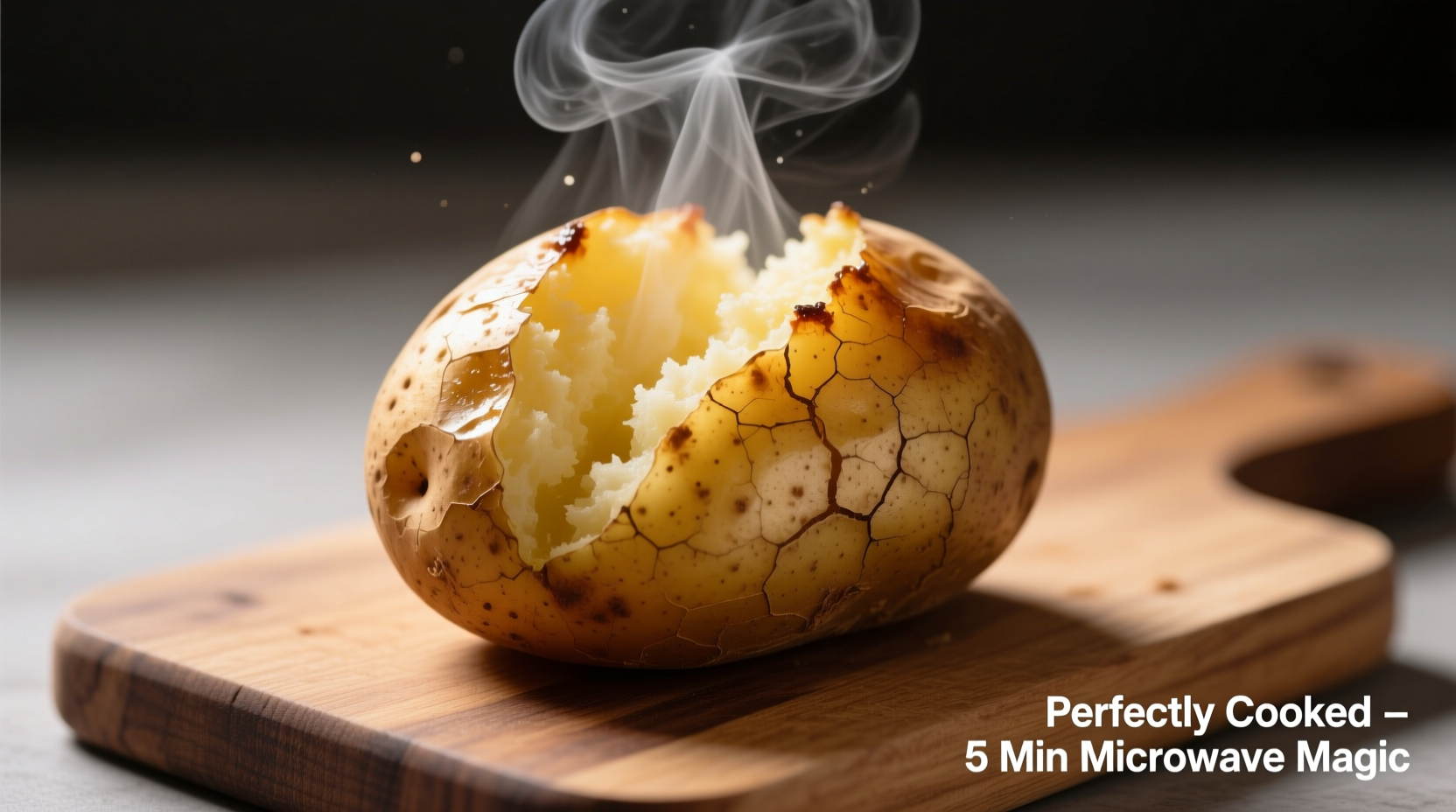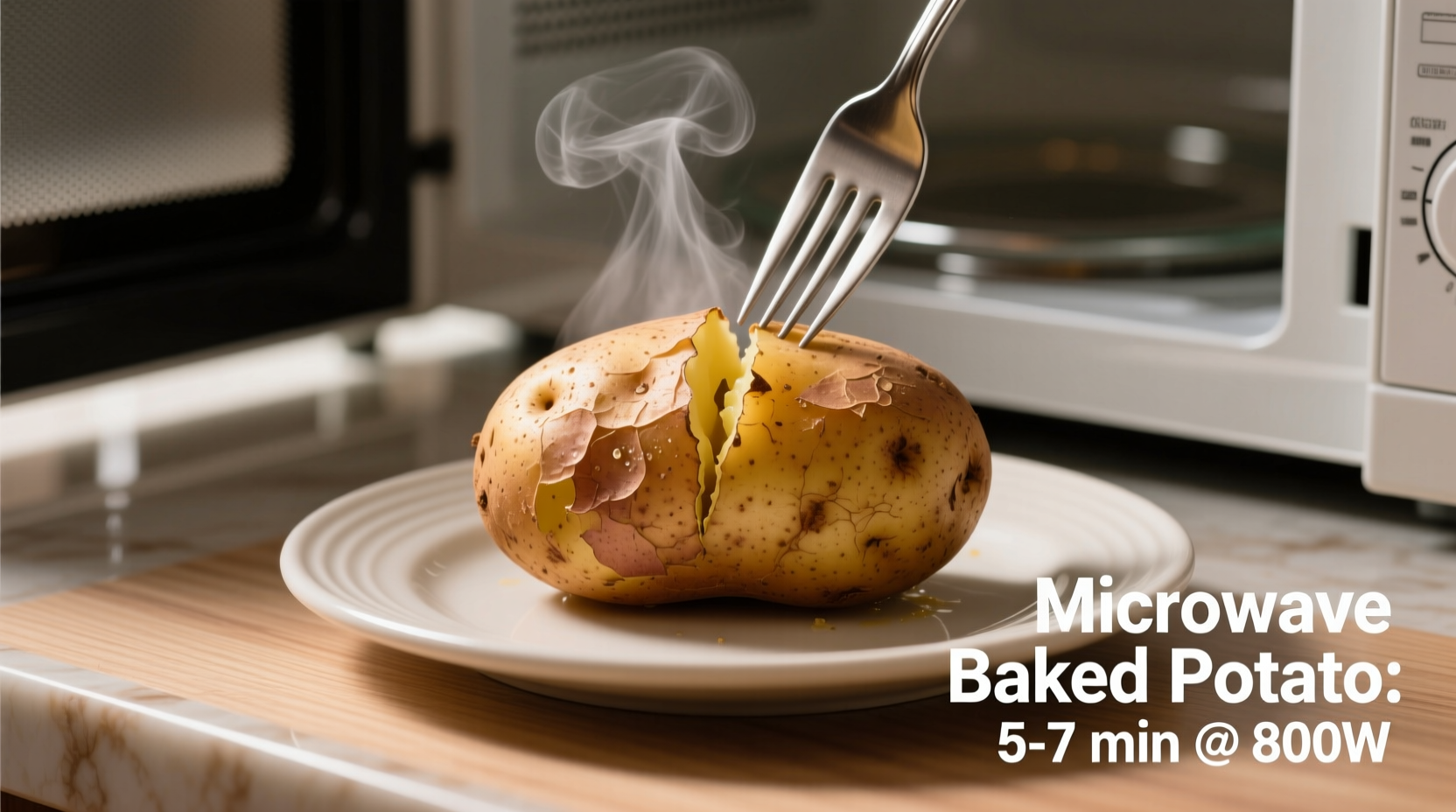Here's the direct answer: To cook a perfect baked potato in the microwave, thoroughly wash and dry a russet potato, pierce it 4-6 times with a fork, microwave on high for 5-7 minutes (turning halfway), then let it rest for 2 minutes. The internal temperature should reach 185°F (85°C) for safe, fluffy results.
Craving a fluffy baked potato but don't want to wait 45-60 minutes for your oven to work its magic? You're in luck. Microwaving delivers a perfectly cooked baked potato in under 10 minutes with the right technique. As someone who's tested hundreds of potato preparations across professional kitchens and home setups, I've perfected the fastest method that avoids the #1 microwave potato disaster: explosions.
Why Microwave Beats Oven for Quick Baked Potatoes
When you're short on time but still want that comforting baked potato experience, the microwave wins hands down. While traditional oven baking takes 45-60 minutes, microwaving cuts cooking time by 80% while delivering comparable results. According to USDA food safety guidelines, both methods safely cook potatoes to the required internal temperature of 185°F (85°C), but the microwave gets you there in minutes rather than nearly an hour.
| Cooking Method | Time Required | Energy Used | Texture Result |
|---|---|---|---|
| Microwave | 5-10 minutes | 0.12 kWh | Fluffy interior, softer skin |
| Oven | 45-60 minutes | 1.2 kWh | Crispy skin, evenly fluffy interior |
This comparison shows why microwaving makes sense when time matters. The energy savings alone make it an eco-friendly choice for single servings.
Safety First: Preventing Potato Explosions
Before we get to the cooking steps, let's address the elephant in the room: exploding potatoes. This isn't just an old wives' tale—potatoes can and do explode in microwaves when not properly prepared. The science is simple: as the potato heats, water turns to steam. Without escape routes, pressure builds until boom.
According to food safety experts at the University of Minnesota Extension, the critical safety step is piercing the skin deeply enough to allow steam to escape. Don't just make shallow pricks—your fork should penetrate at least 1/4 inch into the flesh at 4-6 evenly spaced points around the potato.
Your Step-by-Step Microwave Baked Potato Guide
Preparation: Setting Up for Success
Start with these essential prep steps that most home cooks skip:
- Choose the right potato: Russets work best due to their high starch content. Aim for medium-sized (5-8 ounces) for even cooking
- Wash thoroughly: Scrub under cold water to remove dirt—never microwave unwashed potatoes
- Dry completely: Moisture on the skin creates steam pockets that lead to uneven cooking
- Pierce properly: Use a metal fork to make 4-6 deep punctures around the potato
Cooking: The Perfect Timing Formula
Timing depends on your microwave's wattage and potato size. Use this foolproof formula:
- 5-6 oz potato: 5 minutes total (2.5 minutes, flip, 2.5 minutes)
- 7-8 oz potato: 6-7 minutes total (3 minutes, flip, 3-4 minutes)
- 9+ oz potato: 8-9 minutes total (4 minutes, flip, 4-5 minutes)
Place the potato directly on the microwave turntable—no plate needed. This allows heat to circulate evenly. For best results, stop halfway through cooking time to flip the potato, ensuring even heating.

Resting: The Secret to Fluffiness
Never skip this critical step: after microwaving, let your potato rest for 2 full minutes before handling. During this time, residual heat continues cooking the center while steam redistributes, creating that signature fluffy texture. Cutting too soon releases steam that should stay trapped inside.
Pro Tips for Restaurant-Quality Results
Want to elevate your microwave baked potato from good to exceptional? These chef-tested techniques make all the difference:
- Skin crisping hack: After microwaving, wrap potato in foil and place under broiler for 2-3 minutes for crispy skin
- Even cooking trick: Place potato on a microwave-safe rack instead of the turntable for 360° heating
- Fluffier interior: Sprinkle potato with salt before cooking—this helps break down starches for lighter texture
- Moisture control: For drier, fluffier results, microwave potato on a paper towel to absorb excess moisture
Avoid These 3 Common Microwave Potato Mistakes
Even experienced cooks make these errors that compromise results:
- Skipping the flip: Microwaves have hot spots—failing to rotate your potato guarantees uneven cooking
- Overcooking: Just 60 seconds too long turns fluffy interior to mush—use the internal temperature test
- Using foil: Never microwave potatoes wrapped in foil—it creates dangerous arcing and prevents proper steam release
Remember: the ideal baked potato has an internal temperature of 185°F (85°C). Invest in an instant-read thermometer for perfect results every time.
Serving Your Microwave Baked Potato
Once your potato has rested, slice open the top, fluff the interior with a fork, and add your favorite toppings. For classic baked potato perfection, try:
- Traditional: Butter, sour cream, chives, and black pepper
- Loaded: Crispy bacon, shredded cheddar, and green onions
- Healthy: Greek yogurt, salsa, and black beans
Pro tip: Always add salt to the potato flesh itself, not just the toppings—this enhances the natural flavor throughout.
Storing and Reheating Leftovers
Proper storage maintains quality for next-day enjoyment:
- Cool completely before refrigerating (within 2 hours of cooking)
- Store in airtight container for up to 5 days
- Reheat in microwave at 50% power for 2-3 minutes, covered with damp paper towel
Never leave cooked potatoes at room temperature for more than 2 hours—this creates conditions where harmful bacteria can grow, according to FDA food safety guidelines.











 浙公网安备
33010002000092号
浙公网安备
33010002000092号 浙B2-20120091-4
浙B2-20120091-4